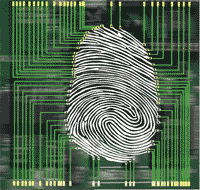
The Holding Cell
Intelligent badge holders may be the major artery in helping TWIC achieve objectives
- By John Petze
- Oct 02, 2007
It's a basic truth: change is difficult. The more people it affects, the more places it includes, the more critical the functions it involves, the more inconvenient and stressful it is.
Since September 2001, the nation has undergone some significant changes in the way it addresses transportation security and, particularly, identity verification. For example, the TWIC program, governed under the auspices of the Transportation Security Administration, now requires that every transportation employee in America, at every port, terminal and station, be positively identified by a government-authorized credential in the form of a smart card. The program promises to radically change the way unescorted transportation workers identify themselves on a daily basis.
Traditional smart card security solutions have been identified as problematic to the deployment of TWIC. However, because they typically require users to stop and insert their cards into fixed mounted readers, this identification process slows the throughput of vehicles and workers at ports, a serious concern that threatens the nation's flow of commerce. It is imperative that the demand for improved identification speed be reconciled with the need for heightened security.
The Need for an Alternative
As TWIC has proposed, drivers are required to stop and present their credentials to a specialized card reader or for manual inspection by a guard. In some cases, it will be necessary for the user to present their fingerprint to a mounted reader, where it will be matched to a back-end database or to the template placed on the card by the issuing agency. In each case, vehicles must come to a complete stop for credential review and approval, which inevitably leads to traffic backlogs. This confirms the concern that access, and therefore commerce, will be impeded unless an alternative solution is implemented. Is there a way to have an "EZ-Pass" or "fast lane" approach to TWIC and still achieve the requisite high levels of security at vehicle gates, ports and other critical facilities?
Wireless technology and advances in handheld, personal biometric devices may hold the key to addressing these challenges, making it possible for countless TWIC cardholders to quickly and conveniently verify identity and gain access to doors, gates and facilities.
The TWIC card is based on FIPS-201 standards that resulted from HSPD-12 and are often referred to as the standards for Personal Identity Verification. Because these smart cards will be the standard identity credential across all government applications, any viable TWIC solution must work with these cards. So how can the cards be incorporated into a solution that enables faster access?
Streamlining TWIC
Most people use a badge holder for some type of smart card, often around the neck or attached to a lanyard on a belt loop. In fact, FIPS-201 requires a shielded holder to prevent sniffing of the contactless interface on the card. What if there was such a thing as an "intelligent badgeholder" that could augment the capabilities of the TWIC card beyond just shielding it? What if such a badge holder not only read the personal information off the smart card, but also included an on-board fingerprint sensor that allowed the user to verify identity for access whenever and wherever necessary? The holder would compare the user's live fingerprint with the fingerprint template stored on the card by the issuing agency. Upon a valid match, the badge holder would wirelessly output a signal (encrypted as necessary) to a remote access reader.
This solution would no longer require the user to come to a full stop, insert the card in a reader, touch a mounted biometric reader, present the card for manual inspection or even roll a window down. Only a valid fingerprint match would activate the badgeholder to transmit a credential for access to a door, gate or a PC.
For maximum effectiveness, this intelligent badge holder would need to support the widely-used reader technologies on the market today, which are proven to withstand outdoor environments and are deployed throughout worldwide government facilities. This includes 125 KHz RFID, the basis of the well-known proximity cards and readers used for physical access control, as well as the newer 13.56 MHz contactless standard, which is employed by smart cards and readers, including those developed to meet FIPS-201 requirements. This also would include 802.15.4 (a relatively new IEEE wireless standard) for long-range communication (100 meters) with vehicle gate control systems.
The intelligent badge holder approach complements the standard TWIC card that will be issued by the government. It not only works with existing, proven physical access control readers, but extends the card's capability by enabling it to also be used for long-range gate access from within a moving vehicle, and for logical access to computers and networks on Microsoft domains, without the need for smart card readers at desktops or any additional middleware. The infrastructure compatibility factor alone dramatically reduces the cost and the hassle of implementing TWIC-based access control at ports and other facilities.
Being More Productive
This approach promises to enhance throughput beyond what is currently available today with manned gates. As a result, productivity delays caused by rush-hour traffic jams can be eliminated, as can the inconvenience to employees of having to roll down a window or step out of a vehicle to present a credential, particularly in inclement weather.
The intelligent badge holder method, made possible by advances in wireless technology, is not only achievable today, it also is more cost-effective than proposed alternative approaches to TWIC that require substantial cash outlays for the purchase and installation of new capital equipment. Most importantly, however, an intelligent badge holder delivers the heightened levels of security so urgently needed at the nation's vulnerable ports of entry, with the added benefit of fast, convenient identification.